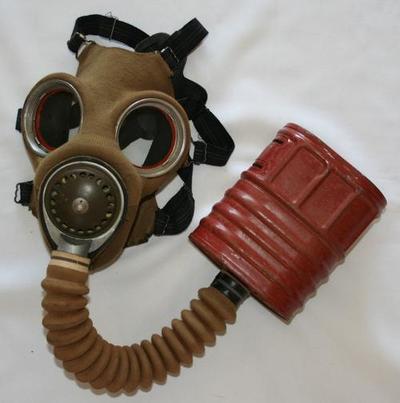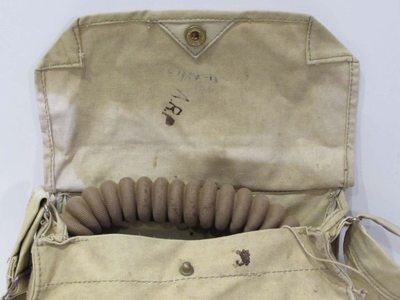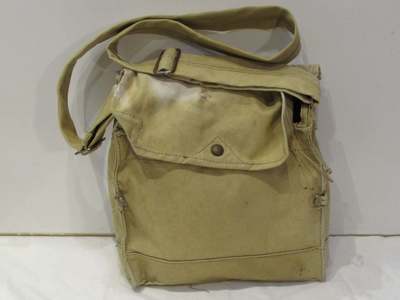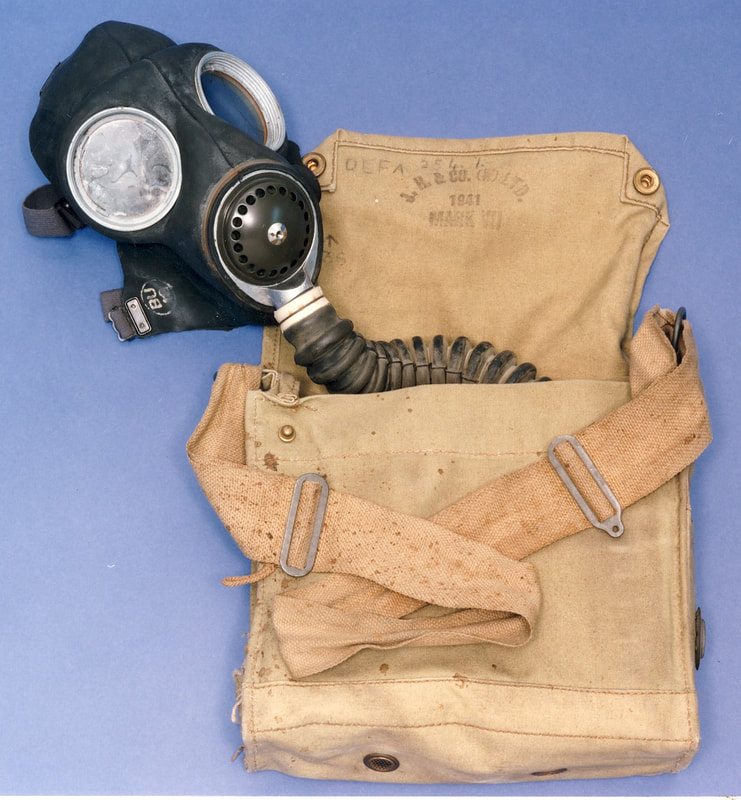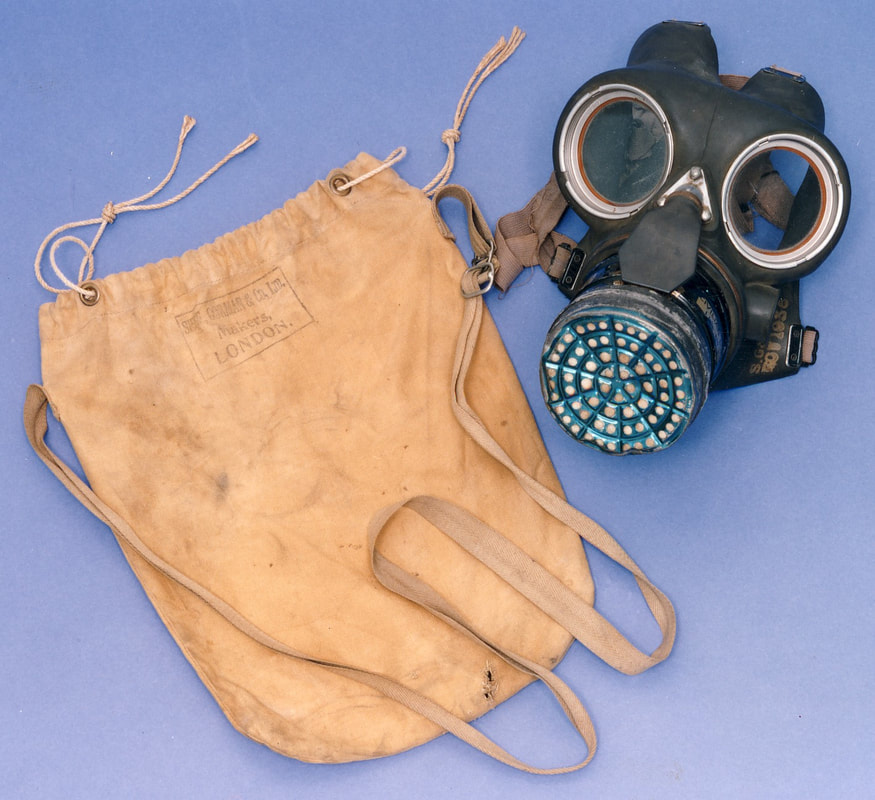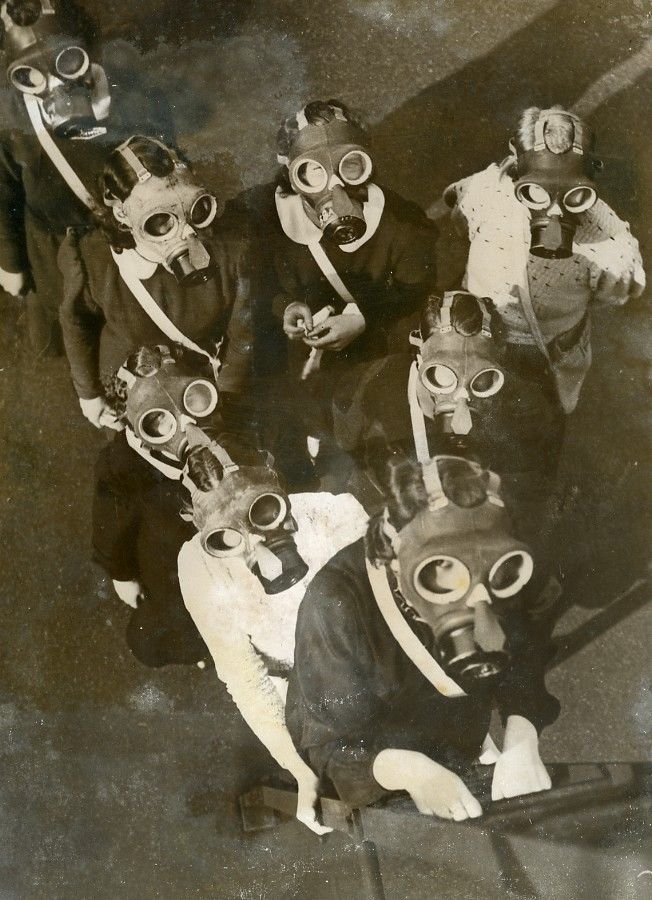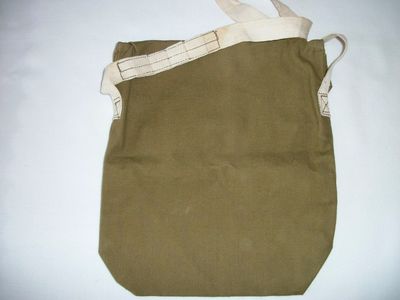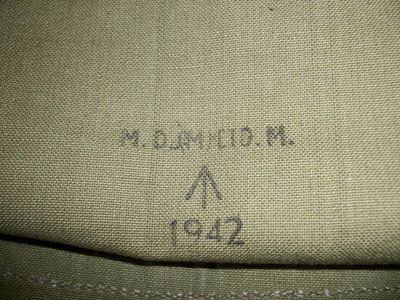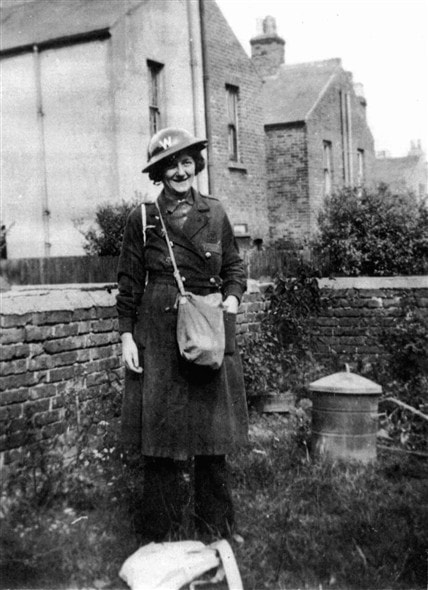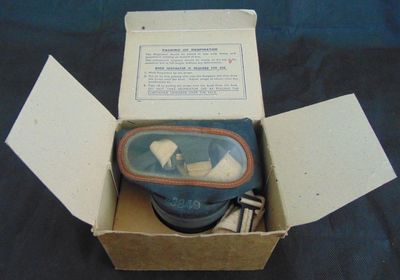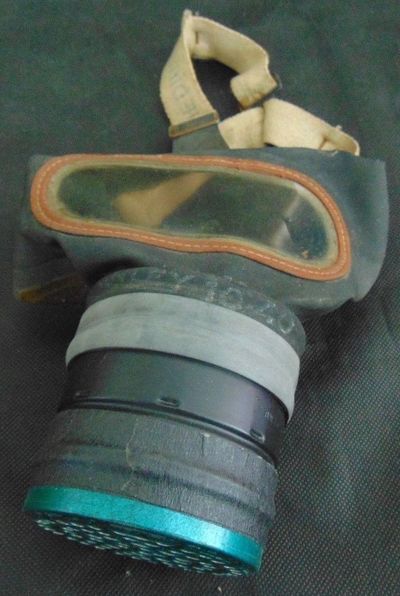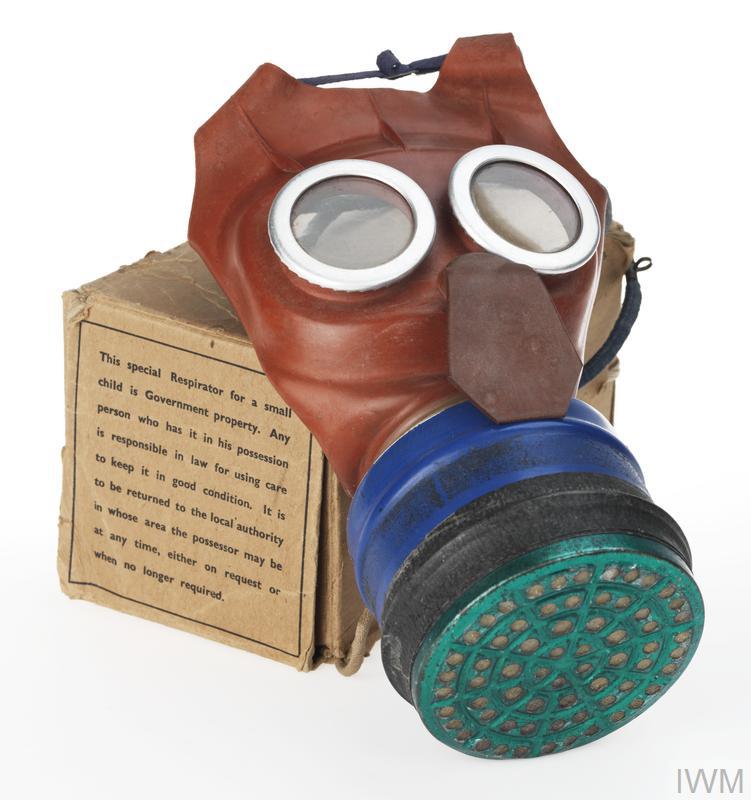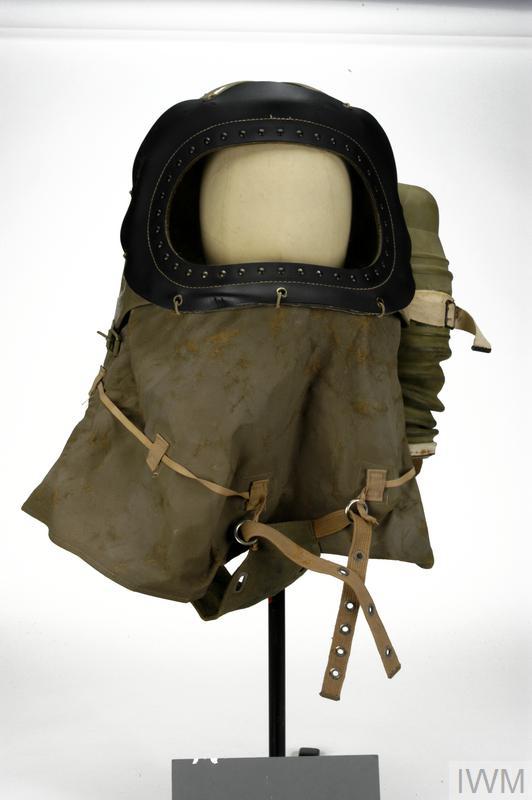WW2 ARP & Civil Defence Respirators (Gas Masks)
From 1938 the Air Raid Precautions Department was tasked with supplying every single person in the UK with a respirator (gas mask); this would include babies, children, adults and those in hospitals and people with conditions requiring a special respirator. This would mean the production of 38 million respirators.
The fear of German raids using poison gas was high and casualties were expected to be extremely large. In addition to the issue of gas masks, the ARP and civil defence services were trained in dealing with the casualties of raids involving various types of poison gas and chemicals. In fact, the first handbook issued covered the treatment of gas casualties.
The fear of German raids using poison gas was high and casualties were expected to be extremely large. In addition to the issue of gas masks, the ARP and civil defence services were trained in dealing with the casualties of raids involving various types of poison gas and chemicals. In fact, the first handbook issued covered the treatment of gas casualties.
ARP General Service Respirator (GSR) and Haversack Carry Bag
The General Service Respirator (GSR) featured a hose connected to the filter and provided more facial coverage. It was designed to allow the wearer to withstand heavy concentrations of gas for long periods, and to give the wearer the greatest possible freedom of movement and comfort.
When worn the haversack was worn high on the chest and was connected to the facepiece via a corrugated rubber tube. The eyepieces were made of unsplinterable glass, and there was a special outlet valve designed to allow audibility of speech.
When worn the haversack was worn high on the chest and was connected to the facepiece via a corrugated rubber tube. The eyepieces were made of unsplinterable glass, and there was a special outlet valve designed to allow audibility of speech.
WW2 Civilian Duty Respirator & Shoulder Bag
Civilian Duty Respirator gas masks were issued to all members of the Civil Defence services not issued the respirator above. The facepiece was made of noulded rubber thicker than the Civilian Duty Respirator covered below. It was fitted with an outlet valve and with removable eyepieces of strong glass held in metal rims.
The carrying bag was a simple cloth bag with shoulder strap - many variations in design exist. The respirator protected the wearer from all known war gases.
The carrying bag was a simple cloth bag with shoulder strap - many variations in design exist. The respirator protected the wearer from all known war gases.
WW2 Civilian Duty Respirator Gas Mask Carrier
This simple sack was used to carry the Civilian Duty Respirator. The bag was closed with a flap and two buttons. The white cotton shoulder strap was siupllied with a section that had been sewn so that by undoing a section the length of the strap could be increased.
General Civilian Respirator
This was the type of gas mask issued to the general public (adults and children aged over four) prior and during the second world war. The facepiece is made of thin sheet rubber, with a window of non-flammable transparent material. Air is drawn through the container, and exhaled air is prevented from passing back through the same channel by a simple non-return valve consisting of a rubber disc attached to the inner end of the container. The exhaled air forces its way out by lifting the thin rubber of the facepiece at its edges, so that a separate outlet valve is unnecessary.
This respirator came in three sizes - small, medium and large. A plethora of carriers were manufactured during the war to carry the civilian gasmasks. Often the cardboard box could be inserted into a carrier or for ladies specially-designed handbags had a space at the bottom to store the gasmask.
This respirator came in three sizes - small, medium and large. A plethora of carriers were manufactured during the war to carry the civilian gasmasks. Often the cardboard box could be inserted into a carrier or for ladies specially-designed handbags had a space at the bottom to store the gasmask.
Anti-Gas Helmet for Babies & Small Child's Respirator
For children aged 18 months to 4 years of age, a special respirator called the Small Child's Respirator, was provided and was similar in appearance to the Civilian Duty Respirator. It was made in a distinctive red colour and fitted with a safety device to prevent its removal by the child.
For babies and toddlers under 18 months a respirator called Anti-Gas Helmet for Babies was made. The head and body of the child were enclosed within the helmet. Purified air was pumped in through the container by the person in charge.
For babies and toddlers under 18 months a respirator called Anti-Gas Helmet for Babies was made. The head and body of the child were enclosed within the helmet. Purified air was pumped in through the container by the person in charge.
Anti-Gas Instructional Posters
The Ministry of Home Security released a number of educational and instructional poster during the war. The below three posters covered the main gas masks in circulation. See this page for a description of the training posters.
Asbestos in World War II Respirator Canisters
The Chemical Defence Establishment at Porton Down released a report in 1989 - Asbestos in World War II Respirator Canisters - detailing the use of asbestos in the manufacture of respirator filter canisters prior and at the start of the second world war. Filters were made with 80% carded wool and 20% asbestos. Sometime in 1940 this asbestos wool was replaced by resin-impregnated wool. However, some 40 million respirators containing the asbestos wool had been issued by 1939. For more information download and read the report below.
| asbestos_in_world_war_ii_respirator_canisters.pdf |
